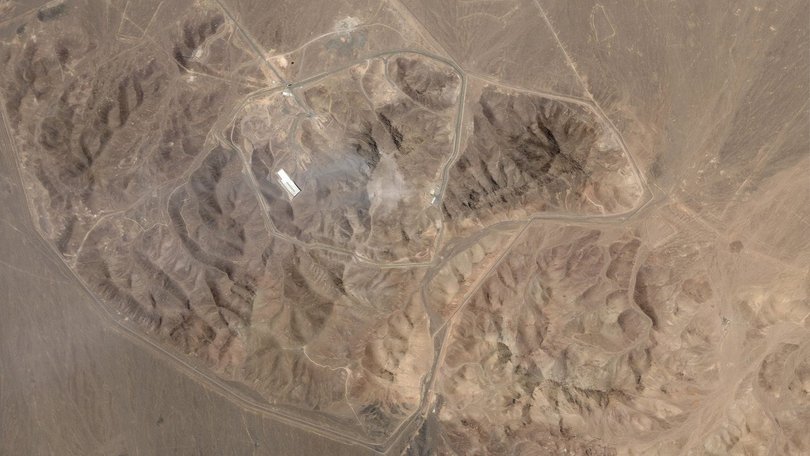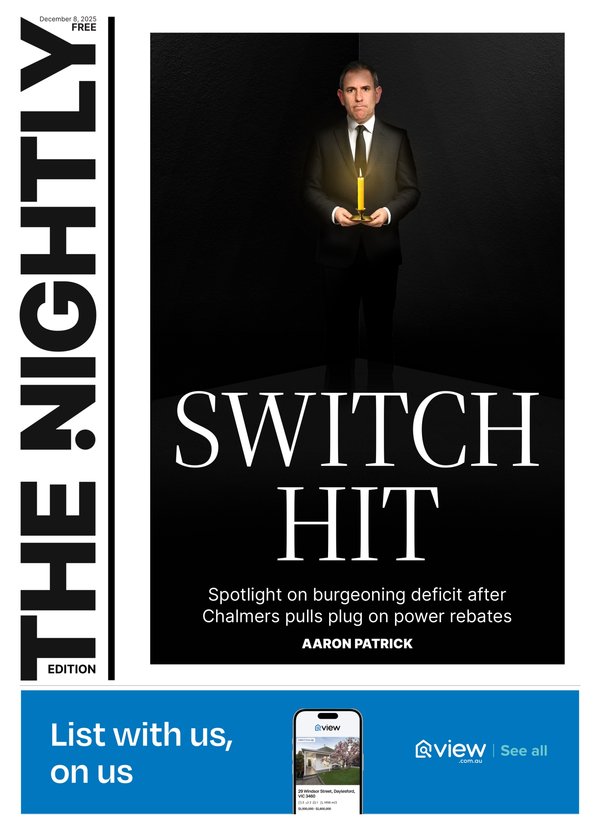Damage seen at Iranian nuclear site after US strikes

Satellite images are showing damage to Iran’s underground nuclear site at Fordo, one of three facilities targeted by US airstrikes, in alliance with Israel’s mission to destroy its foe’s nuclear program.
The images by Planet Labs PBC showed damage to the site’s entryways and also to the mountain that Fordo is under.
Sealing those entry tunnels means that Iran would have to dig out the facility to reach anything inside.
Sign up to The Nightly's newsletters.
Get the first look at the digital newspaper, curated daily stories and breaking headlines delivered to your inbox.
By continuing you agree to our Terms and Privacy Policy.In an address to the nation from the White House, US President Donald Trump asserted that Iran’s key nuclear sites had been “completely and fully obliterated”.
Trump warned there would be additional strikes if Tehran retaliated against US forces.
“There will either be peace or there will be tragedy for Iran,” he said.
The Atomic Energy Organisation of Iran confirmed that attacks took place on its Fordo, Isfahan and Natanz sites, but insisted that its nuclear program will not be stopped.
The International Atomic Energy Agency said there were no immediate signs of radioactive contamination at the three locations following the strikes.
Chief Rafael Grossi, has convened an emergency meeting of the nuclear watchdog.
Leaders and international organisations around the globe are appealing for diplomacy to de-escalate the conflict.
But Iran’s Foreign Minister Abbas Araghchi posted on X that the US strikes had ‘launched a dangerous war’ and blown up any possibility of diplomacy with the Americans or Europeans.
“Last week, we were in negotiations with the US when Israel decided to blow up that diplomacy. This week, we held talks with the E3/EU when the US decided to blow up that diplomacy,” Araghchi wrote on X. “What conclusion would you draw?”
Hours after the US attacks, Iran’s paramilitary Revolutionary Guard said it launched a barrage of 40 missiles at Israel, including its Khorramshahr-4, which can carry multiple warheads.
Israeli authorities reported that more than 80 people suffered mostly minor injuries, though one multi-storey building in Tel Aviv was significantly damaged, with its facade torn away exposing the apartments inside. Houses across the street were almost completely destroyed.
Following the Iranian barrage, Israel’s military said it had “swiftly neutralised” the Iranian missile launchers that had fired, and that it had begun a series of strikes toward military targets in western Iran.
Iran has maintained its nuclear program is for peaceful purposes only. However, Trump and Israeli leaders have argued it could quickly assemble a nuclear weapon, making it an imminent threat.
The decision to directly involve the US in the war comes after more than a week of Israeli strikes that significantly degraded Iran’s air defences and offensive missile capabilities, and damaged its nuclear enrichment facilities.
After the airstrikes the US president posted: “This is an HISTORIC MOMENT FOR THE UNITED STATES OF AMERICA, ISRAEL, AND THE WORLD. IRAN MUST NOW AGREE TO END THIS WAR. THANK YOU!”
Israel announced Sunday that it had closed its airspace to both inbound and outbound flights in the wake of the US attacks.
The attack used bunker-buster bombs on Iran’s Fordo nuclear fuel enrichment plant built deep into a mountain, a US official said.
In addition, US submarines launched about 30 Tomahawk missiles.
The decision to attack, taken without congressional approval, was a risky one for Trump, who won the White House partially on the promise of keeping the US out of costly foreign conflicts.
But Trump also vowed that he would not allow Iran to obtain a nuclear weapon.
After Israel began striking Iran, Trump went from publicly expressing hope that the moment could be a “second chance” for Iran to make a deal to delivering explicit threats on Khamenei and making calls for Tehran’s unconditional surrender.
Israeli Prime Minister Benjamin Netanyahu praised Trump’s decision saying the US “has done what no other country on earth could do.”
Iranian-backed Houthi rebels in Yemen, who had threatened to resume attacks on US vessels in the Red Sea if the Trump administration joined Israel’s military campaign, called on other Muslim nations to form “one front against the Zionist-American arrogance.”
Israeli strikes on Iran have killed at least 865 people and wounded 3,396 others, according to the Washington-based group Human Rights Activists. The group said of those dead, it identified 363 civilians and 215 security force personnel.
Originally published on AP
